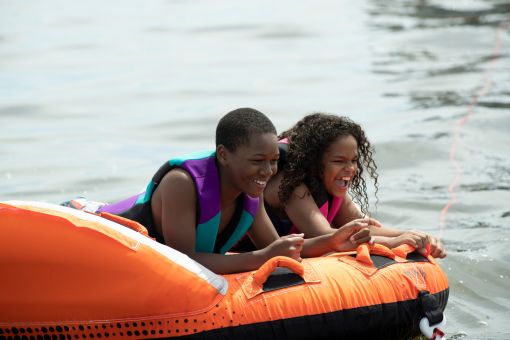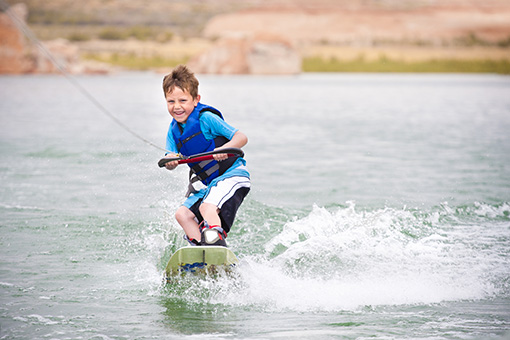Mark your calendar for Sunday, July 20, 2025—it's Pass the Handle Day! Pass the Handle is all about making water sports accessible and beginner-friendly, giving everyone the chance to try something new on the water. It's the ideal setting to introduce friends or family to a sport you love, or to try something entirely new for yourself.

What is Pass the Handle?
Pass the Handle isn’t just a day on the water—it’s an invitation to discover a new passion, build community, and get active. Pass the Handle was launched as a way for experienced water sports enthusiasts to “pass the handle” to newcomers and help them get out on the water. Whether you’re introducing a friend who’s never set foot on a board to your favorite sport, or trying something new yourself, Pass the Handle is all about making water ports approachable and fun for everyone. Trying new water sports is a fantastic way to challenge your body, build confidence, and break out of your routine. Plus, it’s a great way to spend time outdoors with friends and family, soaking up the summer sun.
Explore the Wide Variety of Watersports
On Pass the Handle Day, there’s an adventure waiting for riders of every skill level to try—from water skiing to hydrofoil boarding, and more. If you’ve always wanted to experience the physical demands of a full body workout while gliding across lakes and rivers, this is your chance. The event is designed to introduce beginners to the basics, with experienced riders ready to share their passion and expertise.
- Tubing: Major thrills, minimal skills. Tubing is hands-down one of the most popular towed watersports, and it’s easy to see why. It’s accessible to all ages and skill levels—all you need to do is hop on, hold tight, and get ready for some serious fun. The concept is simple: a boat pulls a tube with a tow rope. The driver can pull tubers nice and easy or use their boat’s speed and maneuverability to give tubers the ride of their life.
- Kneeboarding: Kneeboarding is a great introduction to towed watersports, and it’s often considered the logical "next step" once you’re ready to graduate from tubing. It involves riding a small flat board on your knees while being towed behind a boat. While ideal for beginners, it’s also sport unto itself with a full range of tricks from basic manuevers to advanced stunts riders can master over time.
- Water skiing: The OG tow sport, water skiing offers a magical combination of tranquil open waters with the heart-pumping speed. The concept is simple. You stand on one or two skis while a boat pulls you across the surface of the water. But don’t let the simplicity fool you—water skiing offers an incredible physical challenge and an unmatched adrenaline rush. Starting out, you'll focus on just getting up and staying balanced, which is thrilling enough on its own. As your skills develop, a world of possibilities opens up. With practice you can progress from basic gliding to jumping wakes and performing stunts.
- Wakeboarding: Wakeboarding is also a fantastic way to get started in tow water sports. While it may take a few rounds to get up on the wakeboard, you’ll quickly become comfortable once you’re up. Once you’ve mastered the basics, staying up consistently and maintaining control for longer stretches—, it’s time to try some beginner tricks like edging, crossing the wake, and jumping the wake
- Wakesurfing: Think of wakesurfing as the chill cousin of wakeboarding. Wakesurfing brings a classic laid-back surf vibe to your local waters—no ocean required. You start like wakeboarding, attached to the boat via rop and handle. However, once you’re up on the board and moving, you let go of the rope and surf the boat’s wake like it’s an ocean wave. No rope, no pulling, just you carving the water under your own power. Wakesurf boards are larger than wakeboards, with no bindings so you can move freely. Boats cruise at slower speeds to create that perfect clean wave for surfing.
- Hydrofoil boarding If you’re looking to push your boundaries, hydrofoil boarding is an exhilarating choice. This newer water sport involves riding a board that hovers above the water, creating a feeling of gliding through the air. It requires a bit more balance and skill, making it a great progression for those who have mastered the basics of paddleboarding or wakeboarding. The sensation of flying above the surface, cutting through smooth water, is unlike any other experience
Safety First on the Water
While safety is key when enjoying any water-based activity, prioritizing safety is absolutely essential for all towed watersports. So, before you grab the rope or hit the throttle, here are the essentials:
- Wear a life jacket—This is non-negotiable.
- Know the conditions—Check the weather and the water
- Have a spotter—They’re your eyes on the water
- Agree on hand signals down before you head out—Essential for communicating when to stop, start, speed up or slow down between rider and driver
- Stay aware—of your surroundings, other boats, and your limitations
When introducing beginners, start in calm bodies of water, in areas free from heavy traffic, and ensure they have mastered basic skills before advancing to more challenging activities. Riders should know how to tread water and be comfortable in deep water. Additionally, understanding how to safely let go of the rope if you fall is an important part of the learning process.
Ready to Dive In?
Gather your crew, head out to experience an adventure that just might spark a lifelong passion. Pass the Handle Day is your perfect opportunity to discover the thrill of water sports. With options ranging from high-energy wakeboarding to the easy-going vibe of wakesurfing, there’s something for everyone.
Pass the Handle invites you to explore new skills and challenge yourself on the water. Join the movement, get on the water, and experience why water sports offer so much more than just a day out in the sun. So, grab your gear, your friends, and your adventurous spirit, and make this Pass the Handle Day one to remember.
Are you ready to dive in?

